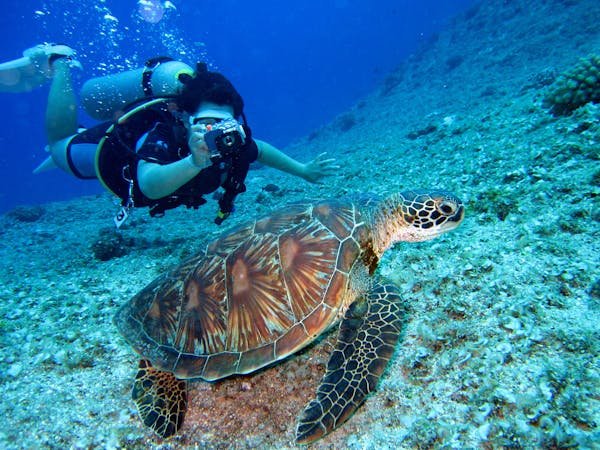Zanzibar, a tropical paradise off the coast of Tanzania, is known for its white-sand beaches, turquoise waters, historic Stone Town, and vibrant Swahili culture. While it’s possible to visit year-round, understanding the seasonal weather patterns, local events, and travel conditions can help you plan the perfect getaway. So, when is the best time to visit Zanzibar? Let’s break it down.
1. Zanzibar’s Climate Overview
Zanzibar has a tropical climate, characterized by warm temperatures and high humidity throughout the year. The year is split into dry and rainy seasons:
Rainy Seasons:
- Long Rains: Mid-March to May (most intense)
- Short Rains: November to early December (less severe)
Dry Seasons:
- June to October: Cool and dry – most popular for travel
- Late December to February: Hot and dry – ideal for beach holidays
Temperatures typically range from 25°C to 32°C (77°F to 90°F), with coastal breezes keeping things pleasant.
2. Best Time to Visit Zanzibar: June to October
If you’re looking for ideal beach weather and clear skies, the months from June to October are widely considered the best.
Why Visit During This Period:
- Pleasant weather: Moderate temperatures and low humidity.
- Perfect beach conditions: Calm waters ideal for swimming, snorkeling, and diving.
- Post-safari relaxation: Many travelers combine a Tanzania safari with a beach holiday in Zanzibar during this time.
Expect larger crowds and higher accommodation prices during these months, especially in July and August, which coincide with European summer holidays.
3. Second Best Time: Late December to February
Another excellent time to visit is from late December through February.
Highlights:
- Sunny days and warm temperatures, great for sunbathing.
- Crystal-clear water visibility – ideal for scuba diving and snorkeling.
- Popular festive season – New Year celebrations bring vibrant energy to the island.
Be aware that prices spike during the Christmas and New Year period, and early bookings are essential.
4. When It Rains: March to May (Low Season)
The long rains from mid-March to May make this the least popular time to visit. Heavy downpours can lead to:
- Flooded roads and transportation issues
- Rough seas, affecting ferry schedules and boat trips
- Limited beach time due to overcast skies
However, there are still benefits if you don’t mind the rain:
- Lower hotel rates
- Fewer tourists
- Lush green landscapes ideal for photography
5. Shoulder Season: November to Early December
The short rainy season falls between November and early December. Rain showers are typically brief and often occur at night or in the early morning.
Pros:
- Great deals on hotels and excursions
- Warm temperatures with sporadic rainfall
- Fewer crowds compared to peak season
This is a great option if you’re looking to enjoy Zanzibar on a budget while still getting plenty of sunshine.
6. Best Time for Water Activities
Zanzibar offers world-class diving, snorkeling, and kite surfing. The best time for each activity depends on ocean conditions:
Scuba Diving & Snorkeling:
- June to October (North Coast): Clear water and calm seas.
- November to March (South Coast): Warmer water and better visibility.
Kite Surfing:
- Mid-June to September: Strongest and most consistent winds.
- December to February: Lighter winds, suitable for beginners.
Popular spots for water sports include Nungwi, Paje, and Kendwa.
7. Festivals & Cultural Highlights
Zanzibar’s rich culture is celebrated through numerous local festivals. Time your visit with these events for a more immersive experience:
- Sauti za Busara (February): A major East African music festival held in Stone Town, featuring live music, dance, and parades.
- Zanzibar International Film Festival (July): Celebrates African cinema, arts, and music, drawing international visitors.
- Mwaka Kogwa (July): A traditional Shirazi New Year celebration held in Makunduchi village, featuring symbolic rituals and colorful festivities.
- Eid al-Fitr and Eid al-Adha: Islamic holidays observed with public feasts, prayers, and cultural events. Dates vary by year.
These events offer unique insights into local traditions, cuisine, and arts.
8. Wildlife & Nature Experiences
If you’re interested in wildlife, you can visit Jozani Forest to see the rare Red Colobus monkeys, which are visible year-round. The Mnemba Atoll offers stunning coral reefs and dolphin sightings, best experienced during dry months for better visibility and calm seas.
9. Summary Table: Best Time Based on Activity
| Activity | Best Time to Visit |
|---|---|
| Beach Relaxation | June – October, Dec – Feb |
| Diving & Snorkeling | June – March |
| Kite Surfing | June – Sept, Dec – Feb |
| Festivals & Events | February, July |
| Budget Travel | March – May, Nov |
| Cultural Tours | Year-round |
Final Thoughts
Zanzibar’s natural beauty and warm hospitality are accessible year-round, but your experience will be shaped by weather, crowd levels, and activities. For most travelers, the dry season from June to October offers the best all-around conditions. However, if you’re after good deals and fewer tourists, consider the shoulder seasons or even the rainy months if you’re adventurous.
Whether you’re diving in turquoise waters, exploring spice plantations, or wandering through the alleys of Stone Town, Zanzibar promises a magical escape like no other.
Related Reads
- Craving Pepperoni? Why Calling for Pizza Delivery in Keller, TX Is the Smart Choice
- Tips to Get Success in a Franchise Business
- Top Perfume Trends of 2025, Scents Everyone is Talking About
- How Do You Align with Canada’s Sustainability Reporting Standards
- What Gas Leak Specialists Do to Protect Your Home



